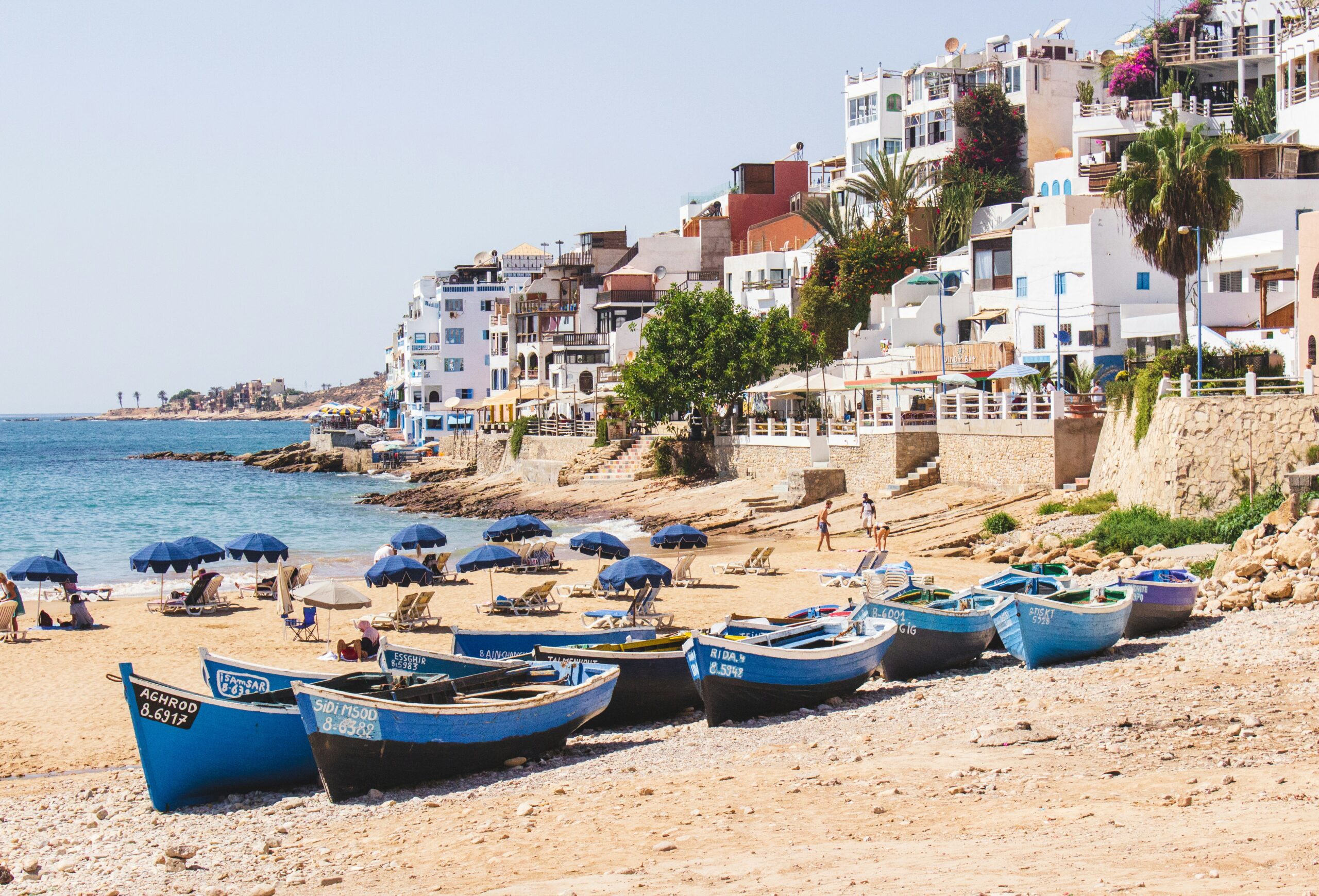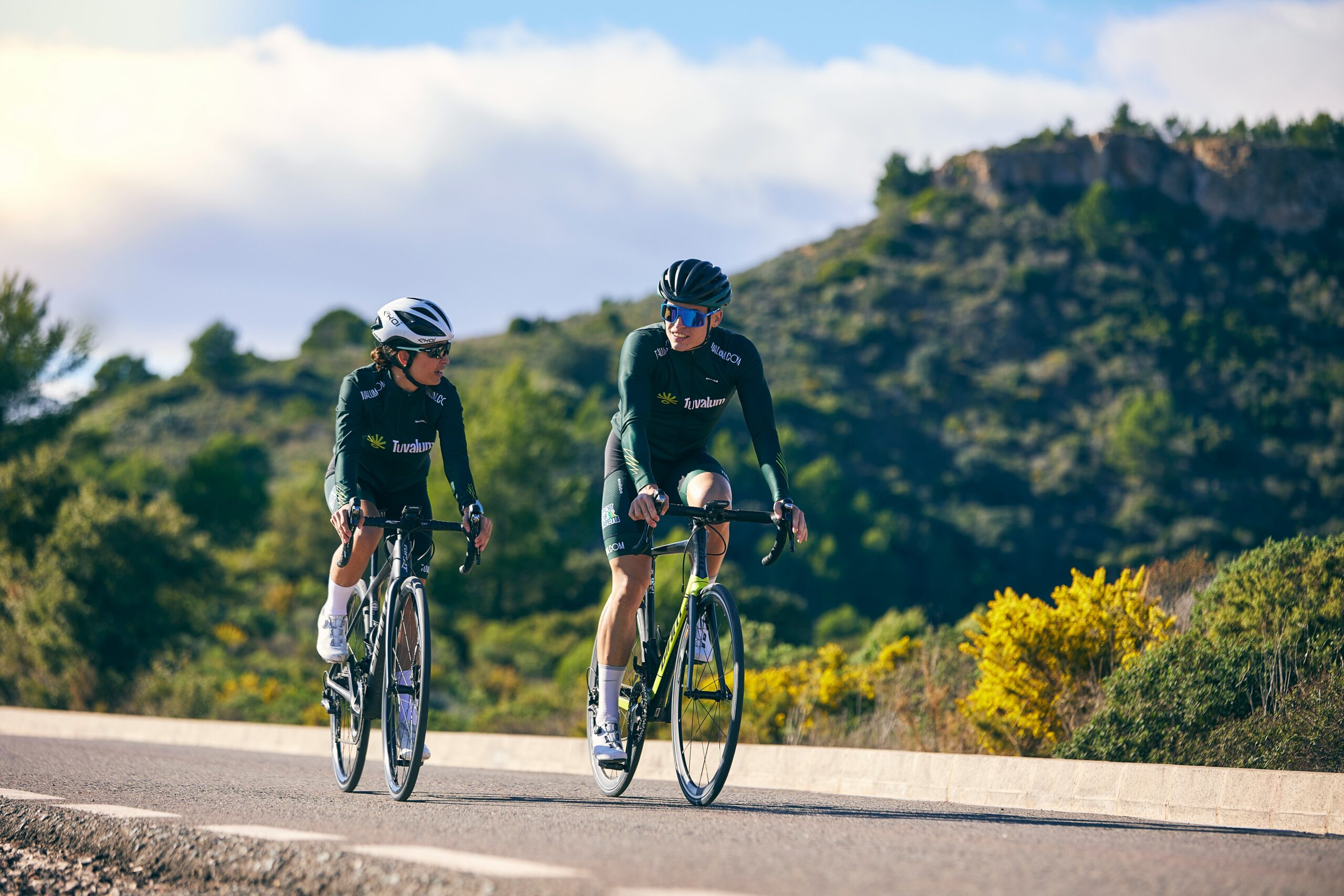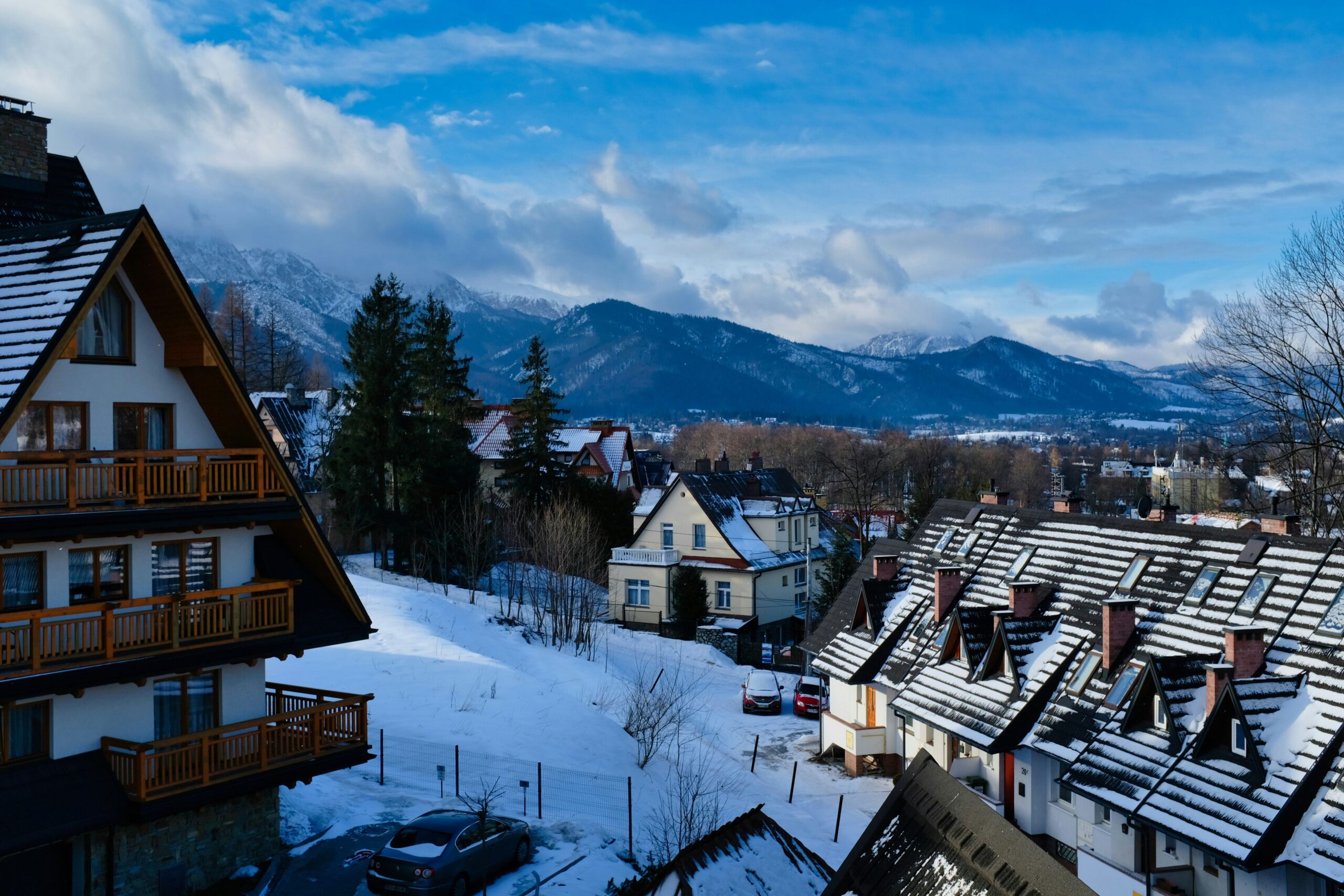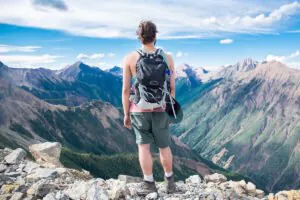Taghazout, Morocco: Where Ancient Berber Culture Meets Modern Nomad Life
The morning call to prayer drifts across Taghazout as the first surfers paddle out into Atlantic swells that have been breaking here for millennia. This small Moroccan village, wedged between endless ocean and the dramatic Atlas Mountains, has quietly become one of North Africa’s most compelling destinations—not just for wave riders, but for anyone seeking an authentic slice of Morocco without the overwhelming intensity of Marrakech or Fez.
What started as a humble fishing village has evolved into something remarkable: a place where traditional Berber life continues alongside a growing community of remote workers, artists, and long-term travelers. Unlike the rapid gentrification seen in places like Canggu or Tulum, Taghazout’s transformation feels organic, almost accidental—which might be exactly why it works so well.
The Sweet Spot Between Tradition and Innovation
Taghazout occupies a unique position in the nomad destination spectrum. It’s developed enough to support remote work—think reliable Wi-Fi in most cafés, a handful of dedicated coworking spaces, and accommodation options that won’t break the bank. Yet it remains refreshingly uncommercial, with local fishermen still hauling their nets onto beaches where laptop-wielding nomads sip mint tea.
The village’s compact size (you can walk end-to-end in 20 minutes) creates an immediate sense of community. Within days, you’ll recognize faces at the local bread shop, know which café has the strongest coffee, and probably have dinner plans with someone you met at the surf break.
What Your Budget Actually Buys You
Let’s talk numbers, because affordability remains one of Taghazout’s strongest draws. While costs have crept up as word spreads, your money still stretches impressively far here.
Monthly living costs (2025 estimates):
- Accommodation: $300-600 for a private Airbnb room with ocean views; $500-900 for a full apartment
- Food: $150-250 for groceries, plus $100-200 if you eat out regularly
- Connectivity: $15-30 for local SIM with generous data
- Coworking access: $90-150/month at established spaces
- Transportation: Minimal—most everything is walkable
- Surfboard rental: $10-15/day for quality boards
The math works out to roughly $1,000-1,200/month for basic comfort, or $1,500-2,000 for a more luxurious experience. Compare that to $3,000+ in Lisbon or $2,500+ in Canggu, and Taghazout’s appeal becomes clear.
Navigating Moroccan Visa Reality
Morocco keeps things relatively straightforward for most travelers. Citizens from the US, EU, UK, Canada, Australia, and Brazil can stay 90 days without a visa—perfect for testing the waters or completing a seasonal work project.
Planning to stay longer? You’ve got options, though none are bulletproof:
- The classic border run: Many nomads take the ferry to Spain for a weekend, then return for another 90 days
- Official extensions: Possible but bureaucratic, requiring visits to local police stations and patience with Moroccan administrative timing
While Morocco hasn’t launched a dedicated digital nomad visa program yet, the existing tourist framework provides enough flexibility for most remote workers’ needs.
Where to Plant Your Laptop
Accommodation hunting in Taghazout rewards early birds and relationship builders. The best spots often come through word-of-mouth rather than booking platforms.
Neighborhoods worth considering:
- Panorama Point: Elevated location with sweeping ocean views and slightly more upscale vibes
- Village center: Walking distance to everything, more affordable, authentic local atmosphere
- Hash Point area: Quieter, popular with longer-term residents
Standout accommodation providers:
- Surf Berbere Apartments: Modern amenities with coworking facilities on-site
- Munga Guesthouse: Boutique property blending contemporary design with local aesthetics
- SunDesk: The granddaddy of nomad-friendly spaces, offering both accommodation and coworking
Pro tip: Join Facebook groups like “Taghazout Community” or “Digital Nomads Morocco” before arriving. Locals and long-term residents regularly share apartment leads and insider accommodation tips.
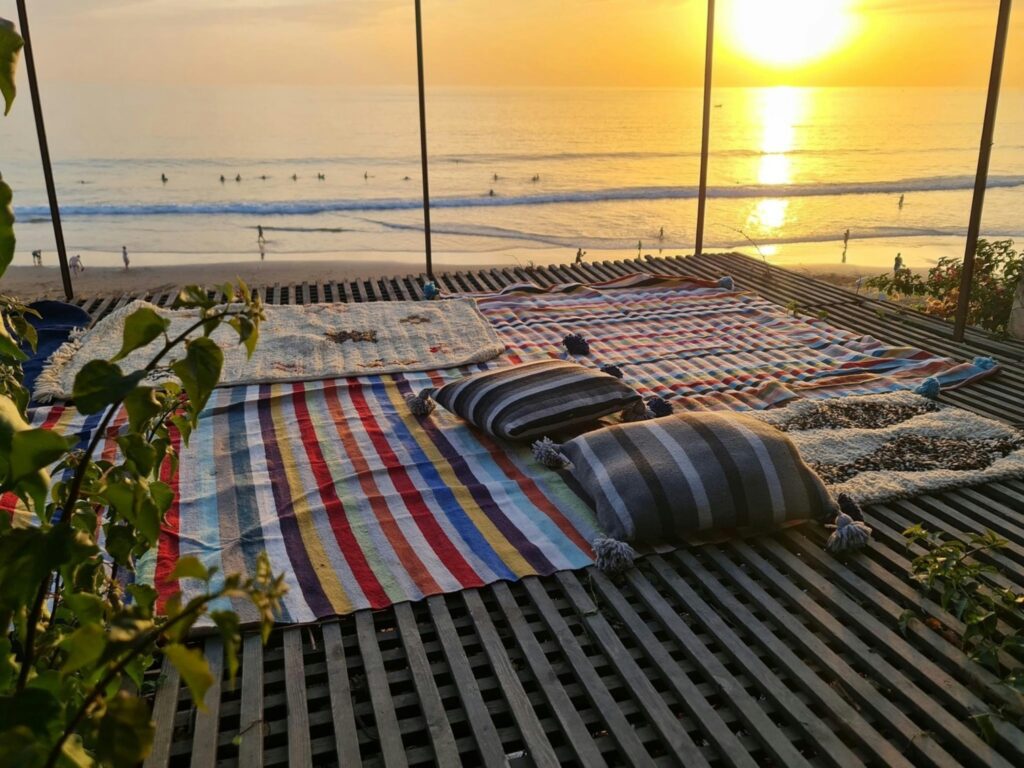
The Art of Eating (and Working) Well
Moroccan cuisine deserves its global reputation, and Taghazout offers both authentic local experiences and nomad-friendly adaptations. The village has mastered the balance between preserving culinary traditions and accommodating international palates.
Essential local dishes:
- Tagine: Slow-cooked stews that vary dramatically by season and cook—each family has secret techniques
- Fresh seafood: Grilled sardines, sea bream, and calamari caught that morning
- Couscous Fridays: A weekly tradition where restaurants serve elaborate couscous platters with vegetables and meat
- Harira soup: Hearty lentil and tomato base, perfect for cooler Atlantic evenings
Where nomads fuel up:
- L’Auberge: Beachfront location with solid Wi-Fi and reasonable prices
- World of Waves: Excellent breakfast spot that transforms into laptop-friendly space mid-morning
- Dar Josephine: Upscale but worth it for special occasions or client calls requiring quiet ambiance
- The Favela: Nomad central—expect to overhear Slack conversations and startup pitches
The local market happens twice weekly and offers incredible produce at fraction of Western prices. Learning to cook Moroccan-style in your accommodation can dramatically reduce costs while deepening cultural understanding.
Cultural Navigation for Respectful Travelers
Morocco rewards visitors who approach with cultural curiosity rather than assumptions. Taghazout’s surf culture has created a more relaxed atmosphere than traditional Moroccan towns, but understanding local customs enhances every interaction.
Key cultural considerations:
- Dress appropriately: Beach attire stays on the beach. In town, covering shoulders and knees shows respect
- Ramadan awareness: During the holy month, avoid eating or drinking publicly during daylight hours
- Language efforts: Even basic Arabic greetings (ahlan wa sahlan, shukran) or Berber phrases generate genuine warmth
- Gender dynamics: Morocco is more conservative than Western countries, though Taghazout’s international community creates relatively comfortable environment for solo female travelers
Traditional experiences worth seeking:
- Hammam visits: Traditional steam baths offer relaxation and cultural insight
- Souks in nearby Agadir: Spice markets, textile vendors, and handicraft artisans showcase regional craftsmanship
- Berber cooking classes: Learn tagine techniques and spice combinations from local families
- Atlas Mountain day trips: Experience Morocco’s highland Berber communities and dramatic landscapes
Safety Realities and Practical Precautions
Morocco generally maintains good safety standards for international visitors, and Taghazout’s small size and tight-knit community add extra security layers. However, staying alert and culturally aware prevents most potential issues.
For solo female travelers:
- Street harassment can occur, though less frequently than in larger Moroccan cities
- Confident body language and clear boundaries typically defuse unwanted attention
- Local women’s groups and expat communities provide excellent advice and support networks
- Many female nomads report feeling safer in Taghazout than in major European cities
General safety tips:
- Avoid excessive alcohol consumption in public spaces
- Keep valuable electronics and passport secured
- Use reputable tour operators for desert or mountain excursions
- Trust your instincts—if something feels off, remove yourself from the situation

Building Community in Paradise
Taghazout’s nomad scene remains intimate enough that newcomers quickly find their tribe. The village attracts a particular type of traveler: those prioritizing experiences over Instagram moments, community over competition.
Coworking and community hubs:
- SunDesk: The established leader with reliable infrastructure, regular events, and strong community programming
- Surf Maroc Cowork: Smaller operation perfect for surfer-nomads who want to combine sessions and spreadsheets
- Café coworking: Many establishments welcome laptop users during off-peak hours
Community events to join:
- Weekly beach cleanups (great way to meet environmentally conscious locals and nomads)
- Surf contests and beach volleyball tournaments
- Language exchange meetups mixing Arabic, French, and English speakers
- Potluck dinners showcasing international and Moroccan cuisines
The nomad community skews slightly older and more experienced than typical Southeast Asian destinations, creating opportunities for meaningful professional networking alongside social connections.
Beyond the Laptop: Exploring Morocco’s Atlantic Coast
While work-life balance matters, Taghazout’s location provides incredible opportunities for adventure and exploration during downtime.
Surfing the legendary breaks:
- Anchor Point: Right-hand point break that produces some of Morocco’s most photographed waves
- Hash Point: More mellow option perfect for intermediate surfers
- La Source: Powerful waves for experienced surfers only
- Boilers: Reef break requiring local knowledge and respect
Land-based adventures:
- Paradise Valley: Freshwater pools and palm oases provide relief from coastal heat
- Atlas Mountains: Day hikes or multi-day treks through traditional Berber villages
- Essaouira: Medieval coastal city perfect for weekend exploration
- Sahara Desert tours: Three-day camel trekking expeditions starting from nearby Agadir
Wellness and relaxation:
- Yoga retreats: Multiple operators offer drop-in classes and week-long programs
- Argan oil cooperatives: Learn about Morocco’s liquid gold production while supporting women’s enterprises
- Traditional music: Seek out gnawa performances and Berber folk music sessions
Timing Your Taghazout Experience
Morocco’s Atlantic coast offers year-round appeal, though different seasons suit different priorities and personalities.
October through March: Prime surf season with consistent swells and mild temperatures. Expect more crowds but the best waves and comfortable working weather.
April through June: Shoulder season with excellent weather, smaller crowds, and lower accommodation prices. Perfect for productivity and cultural exploration.
July and August: Hot but manageable temperatures. European vacation season brings energy but also higher prices and busier beaches.
September: Local favorite combining warm water, lighter crowds, and settled weather patterns. Ideal for both work focus and cultural immersion.
The Taghazout Reality Check
Honesty matters when evaluating any nomad destination, and Taghazout isn’t perfect for everyone. The village rewards travelers who prioritize authenticity over convenience, community over amenities.
Potential challenges:
- Limited nightlife options compared to major cities
- Infrastructure occasionally struggles during peak season
- Language barriers outside tourist-focused businesses
- Conservative cultural norms may feel restrictive for some travelers
- Internet speeds, while adequate, don’t match fiber-connected European cities
Who thrives here:
- Remote workers seeking inspiration and cultural depth
- Surfers combining passion with profession
- Travelers prioritizing cost-effectiveness without sacrificing quality of life
- Anyone wanting to experience Morocco without overwhelming tourist intensity
- Community-minded nomads interested in building relationships rather than just working remotely
Your Next Chapter Starts Here
Taghazout represents something increasingly rare in our hyperconnected world: a place that still feels undiscovered despite growing popularity. It offers the infrastructure necessary for modern remote work while maintaining the soul and authenticity that make travel transformative rather than simply transactional.
Whether you’re drawn by consistent waves, affordable living, cultural richness, or the promise of finding genuine community, Taghazout provides the foundation for whatever comes next in your journey. The village doesn’t promise to solve all your problems or provide every amenity you might want—but it does offer something more valuable: the space and inspiration to remember why you started traveling in the first place.
Pack light, bring curiosity, and prepare to discover why this small Moroccan village has quietly become one of the world’s most compelling places to live, work, and grow.
Related Post: Hidden Gems: Digital Nomad Visas in Unexplored Destinations
